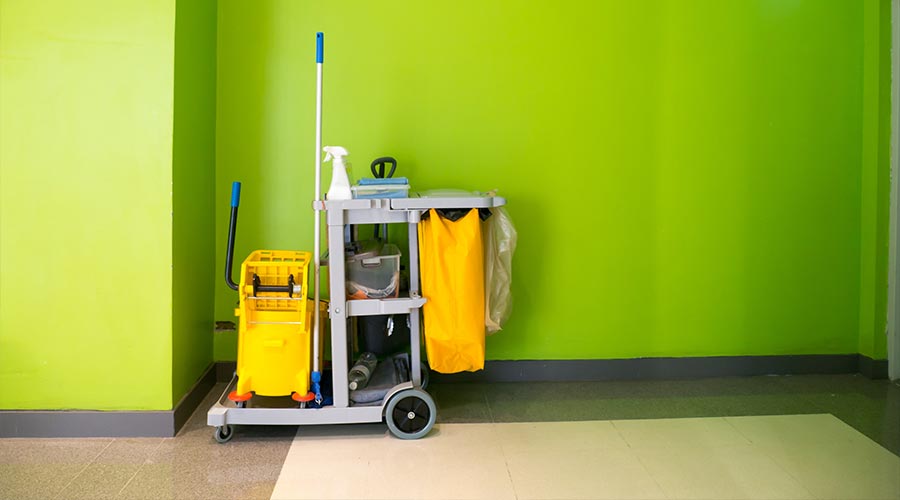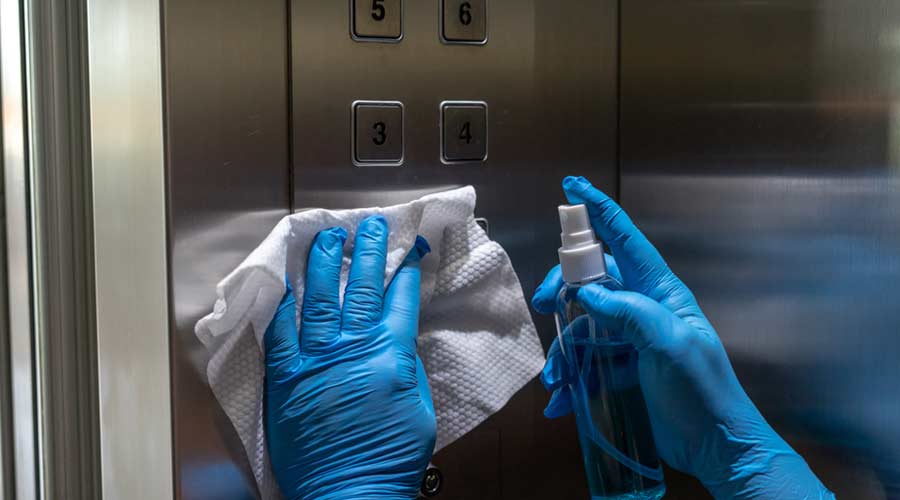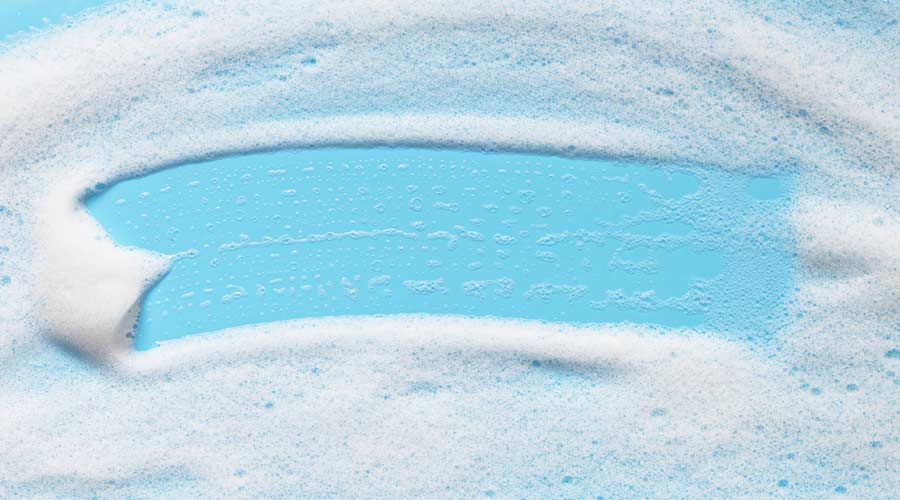
Training frontline staff to use products correctly is equally as important as selecting the right neutral cleaner. First and foremost, staff should be aware of the product’s limitations when it comes to cleaning heavier soil loads.
“Sometimes people will over-mix a product, believing that if there’s more of it, it will clean non-neutral pH soil,” notes Allen. “This creates a second problem of chemical residue to go along with the uncleaned soil load.”
Grego echoes this sentiment, adding that improper dilution ratios are among the biggest mistakes custodians can make when mixing neutral cleaning products.
“The old adage that more is better is not true when it comes to chemistry,” she says. “Make sure you have someone who can properly train your staff on how to mix and use it, especially if you’re not using a chemical dilution station.”
Distributors also recommend facilities outfit their workers with the appropriate tools to make sure they’re getting the most out of neutral cleaners. Pairing neutral cleaning products with microfiber cloths, for instance, will boost their efficacy and may eliminate the need for additional cleaning agents.
“Microfiber is more aggressive than a cotton rag or towel, so using it with a neutral cleaner may get the grime off without going to a higher level of cleaning power,” notes Hicks.
But Can They Disinfect?
When it comes to neutral products, cleaning managers often ask whether they are strong enough to disinfect. The short answer is yes, but managers must remember that not all neutral cleaners are disinfectants. A neutral disinfectant has a neutral pH but also contains active ingredients to kill bacteria and viruses on surfaces.
“The pH level has nothing to do with the efficacy of the product and whether or not it will disinfect,” Grego explains. “For it to disinfect, a neutral cleaner must have quaternary ammonium in it. And the amount of quat in the diluted product will determine how well it does that.”
As with any disinfectant, dwell times for neutral disinfectants vary depending on the product as well as the organism being targeted. Allen estimates that most neutral disinfectants have a dwell time of anywhere between 4 and 10 minutes.
“Most neutral pH disinfectants kill 99 percent of germs and bacteria on contact and 100 percent in 4 to 10 minutes, when mixed properly,” he says. “Very seldom do you need to exercise a longer dwell time because neutral cleaners and disinfectants are taking care of regular day-to-day soil loads.”
So why use a neutral disinfectant versus a non-neutral one? Distributors say that they are typically used for the same reasons you would use a neutral cleaner: Neutral disinfectants are non-toxic, won’t damage surfaces and are suitable for daily use.
“If you have finish on the floor, a regular disinfectant will destroy it,” says Grego. “But a neutral cleaner or disinfectant won’t damage the finish on a surface.”
Choosing Correctly
With a variety of product offerings available, choosing the right neutral chemical can cause managers to pause. Fortunately, distributors and consultants are always willing to help.
Hicks recommends hypochlorous acid, a non-toxic, neutral disinfectant that is safe for users and the environment. For facilities that want a one-step hospital-grade disinfectant, Fagan Sanitary Supply offers a product line that includes a neutral pH disinfectant, detergent and deodorizer.
To help facilities choose the best neutral cleaners for their application, Allen determines what tools and equipment they have to clean the area. When choosing neutral disinfectants, he asks customers the following questions to determine the factors that are most important to their cleaning operation:
“I ask them what they’re looking for: Is it ease-of-use? Do they want the facility to smell clean? Do they want the most cost-effective option? Or do they want to keep the floors as shiny as possible? All of this information will help them make a decision,” he says.
When odor control is a priority, customers can opt for neutral cleaners that contain enzymes. But Grego warns that neutral cleaners containing enzymes have a reduced shelf life of about six months.
Fragrance is another consideration when choosing a neutral cleaner or disinfectant. While some neutral cleaners are odor-free, others are scented, which people often associate with cleanliness.
With an array of options to choose from, Hicks recommends facilities consult their jan/san rep before making a purchasing decision — and use an adenosine triphosphate (ATP) meter to measure the cleanliness of surfaces pre- and post-cleaning. Investing in the right products, equipment and training will ensure that neutral cleaners and disinfectants become indispensable tools in a facility’s cleaning arsenal.
Kassandra Kania is based out of Charlotte, North Carolina, and is a frequent contributor to Facility Cleaning Decisions.
Tips and Tricks for Making the Most of Neutral Cleaning Formulas

 The Down and Dirty on Cleaning in Virus Season
The Down and Dirty on Cleaning in Virus Season How Surfactant Use is Expanding in Commercial Cleaning
How Surfactant Use is Expanding in Commercial Cleaning Maximize Your Margins: Learn How to Automate Pricing and Track Rebates
Maximize Your Margins: Learn How to Automate Pricing and Track Rebates